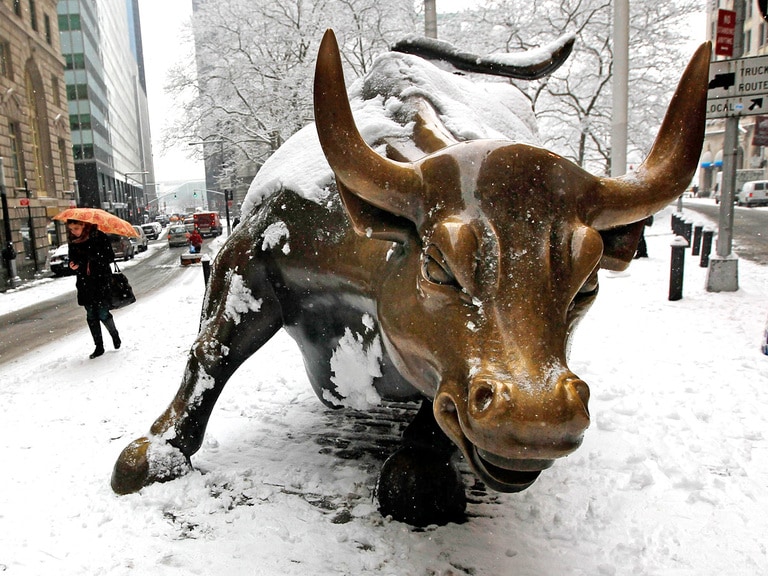The US Global JETS ETF’s share price has made a turbulent recovery since its 52-week – and all-time – low of $11.25, recorded on 19 March last year, as the severity of the COVID-19 pandemic became clear.
Since the JETS ETF’s share price nosedived 63.83%, from $31.10 on 18 February to $11.25 a month later, the fund has gradually pulled up, closing at $23.56 last week.
JETS, which launched in April 2015, tracks the performance of airline stocks with a particular emphasis on US airlines. Its largest holdings are Southwest Airlines [LUV], with a 10.70% weighting, Delta Air Lines [DAL] (9.92%), American Airlines [AAL] (9.77%) and United Airlines [UAL] (8.75%). In all, its top 10 components make up over 63% of the ETF.
63.83%
Share price fall of the JETS ETF between February and March 2020
While the JETS ETF’s share price shows that airline stocks are making a tentative recovery from the impact of coronavirus, as vaccines are approved and rolled out, the longer-term future of the industry may lie in whether air travel can become truly sustainable. What are the options and obstacles facing airline stocks in their bid to go carbon-neutral?
Why does aviation need to become greener?
Airlines are under pressure to reach net-zero greenhouse gas emissions by 2050. The main way to achieve this ambitious target is with sustainable aviation fuels (SAF). These alternatives imitate kerosene, the refined petroleum traditionally used to power aircraft. From 2016 to 2020, just 300,000 of 188 million flights used SAF – less than 0.2% – according to the International Air Transport Association, as reported by the Wall Street Journal (WSJ).
While the alternative exists, however, there’s a long way to go before it supplants kerosene altogether. “To reach global climate targets, we need to build production capacity for SAF fast,” says SkyNRG’s Charlotte Hardenbol, reports Aviation Today. “If you look at the International Civil Aviation Organization (ICAO) 2050 targets for a 50% carbon reduction versus 2005 … we need to produce 265m tons of SAF by 2050.” Hardenbol says the figure for 2019 was just 200,000 tons.
“If you look at the International Civil Aviation Organization (ICAO) 2050 targets for a 50% carbon reduction versus 2005 … we need to produce 265m tons of SAF by 2050” - SkyNRG’s Charlotte Hardenbol
So, is the target achievable? Hardenbol calculates that “we would need to build 500 sustainable aviation fuel production facilities at a scale of 500,000 tons until 2050. And that will need a lot of innovation for new technologies to scale and a lot of funding.”
What are airlines’ green fuel options?
The most advanced option is biofuel, which is made from cooking oil, animal fats, agricultural crops and unused wood, and reduces emissions by up to 80%. Though United Airlines first used biofuel in 2009 and has used it regularly since 2016, it’s overall usage is minor compared with conventional fuel. The problem is cost: “[B]iofuels cost up to four times more than conventional jet fuel … that’s where the business case falls apart”, says United Airlines’ Lauren Riley, as reported by the WSJ.
That said, there is some progress. Microsoft [MSFT] recently signed a deal with Alaska Airlines and SkyNRG to use biofuel on some of its frequent business-travel routes. Shell will turn 200,000 metric tons of non-recyclable and wood waste a year into biofuel, and provide SAF for Amazon [AMZN] and DHL cargo planes, reports the WSJ.
80%
Emission reduction using biofuel
An alternative to biofuel technology could be e-fuels, or power-to-liquid fuels. These use renewable energy like solar and wind to split water into hydrogen and oxygen. The hydrogen is then combined with carbon monoxide, created from captured carbon dioxide. Lufthansa [LFA] hopes to replace 5% of kerosene at its Hamburg hub with power-to-liquid fuel within five years, using wind energy from the North Sea. Shell’s [RDSA] Anna Mascolo believes it “has the greatest potential” and can play a key role in aviation decarbonisation from 2030.
Companies like Airbus [AIR] and ZeroAvia are focusing on hydrogen as a green fuel source. Airbus’ Simone Rauer argues it’s the most promising option because it is produced from renewable energy. Other countries are also keen to invest in this option and, in September, Airbus unveiled its zero-emission commercial aircraft concepts, reports Aviation Today.
What’s the outlook for airline stocks and the JETS ETF’s share price?
Airlines are likely to require significant government support through taxes, incentives and subsidies to bring down the costs of SAF and scale production so that green fuels can compete with fossil fuels. US President Biden has pledged to “incentivise the creation of new, sustainable fuels for aircraft.” The WSJ also reports that the EU is considering quotas for airlines to use SAF.
Air travel is likely to take some time to return to pre-pandemic levels, and there could be other factors threatening the sector’s recovery — particularly for short-haul flights. For example, plans to introduce new train services linking European cities, as part of ambitious EU climate change targets, could see a shift away from air travel.
If airlines receive substantial support in developing clean-energy technologies, the future of both the environment and air travel could be sustainable long-term. That could ultimately benefit airline stocks and the JETS ETF share price but, when it comes to airlines going green, investors should buckle up for the long-haul.
Disclaimer Past performance is not a reliable indicator of future results.
CMC Markets is an execution-only service provider. The material (whether or not it states any opinions) is for general information purposes only, and does not take into account your personal circumstances or objectives. Nothing in this material is (or should be considered to be) financial, investment or other advice on which reliance should be placed. No opinion given in the material constitutes a recommendation by CMC Markets or the author that any particular investment, security, transaction or investment strategy is suitable for any specific person.
The material has not been prepared in accordance with legal requirements designed to promote the independence of investment research. Although we are not specifically prevented from dealing before providing this material, we do not seek to take advantage of the material prior to its dissemination.
CMC Markets does not endorse or offer opinion on the trading strategies used by the author. Their trading strategies do not guarantee any return and CMC Markets shall not be held responsible for any loss that you may incur, either directly or indirectly, arising from any investment based on any information contained herein.
*Tax treatment depends on individual circumstances and can change or may differ in a jurisdiction other than the UK.
Continue reading for FREE
- Includes free newsletter updates, unsubscribe anytime. Privacy policy





